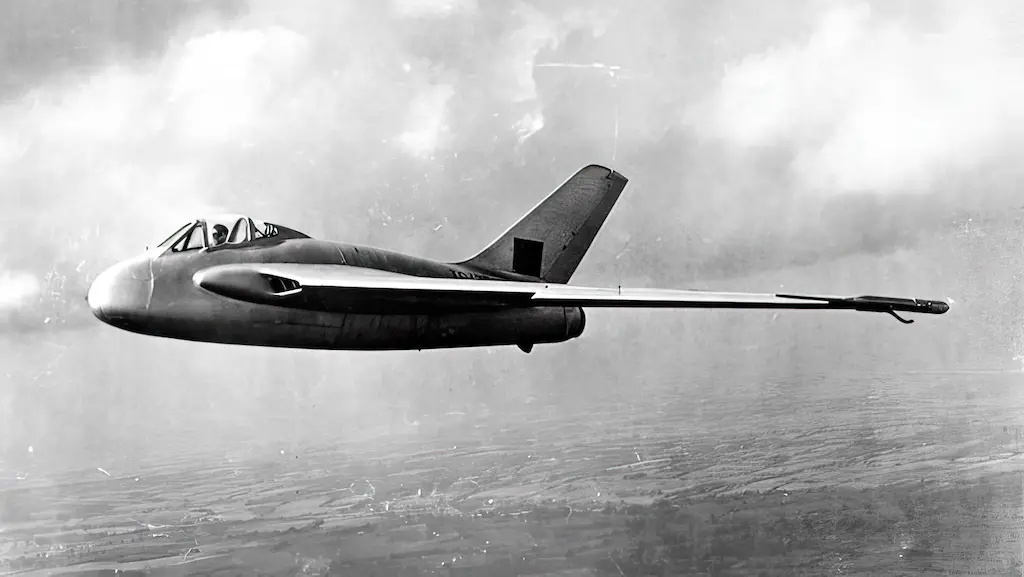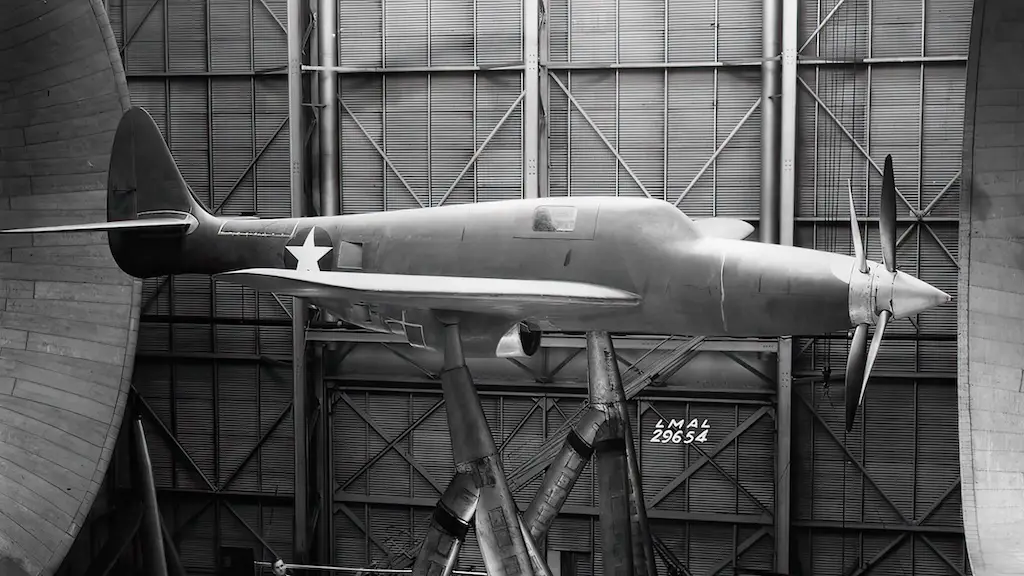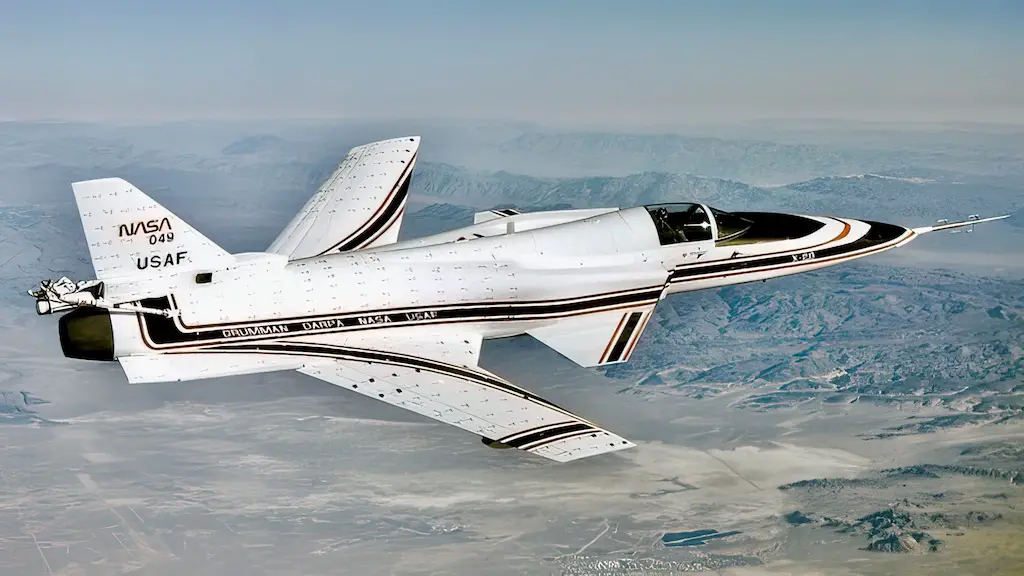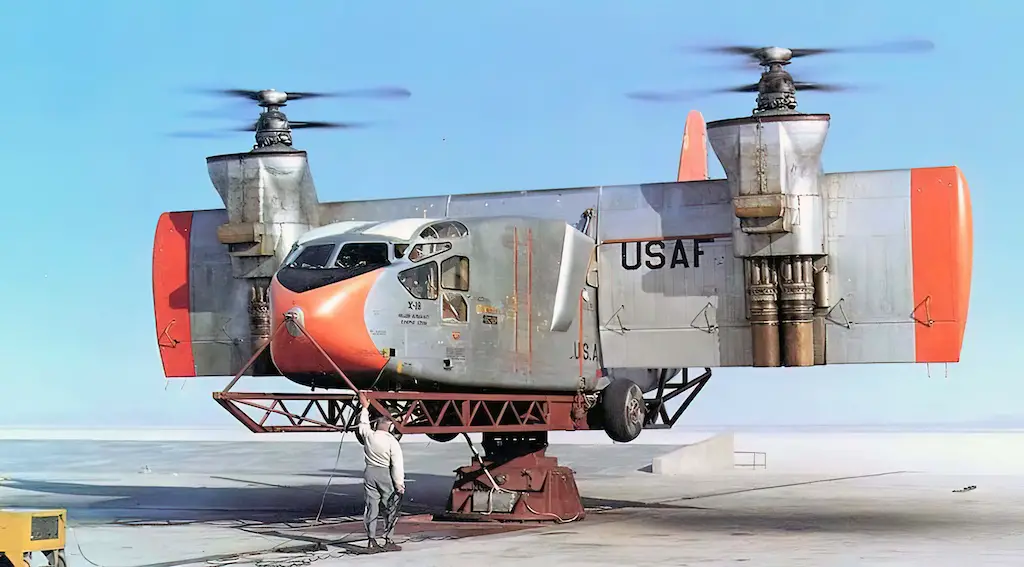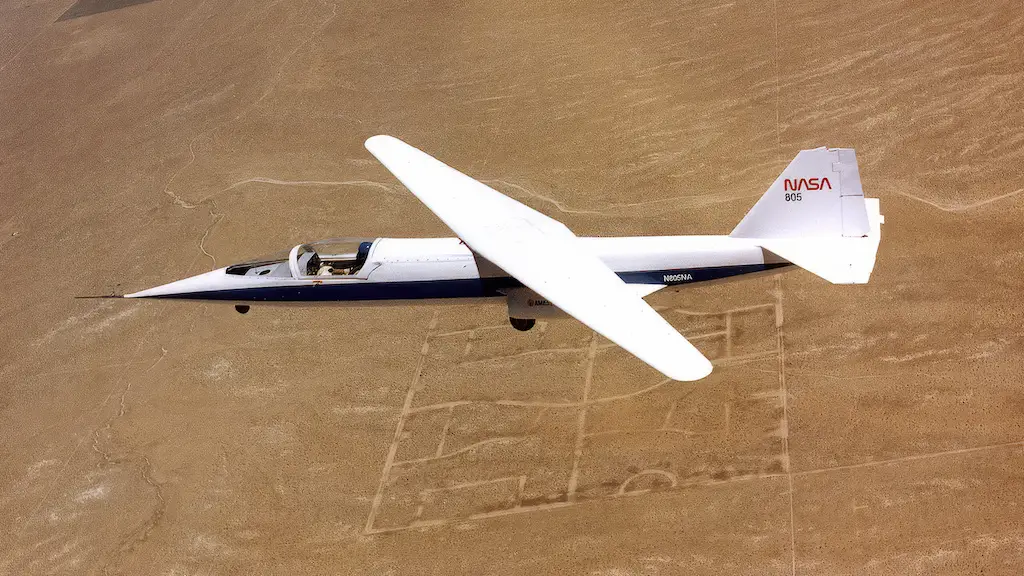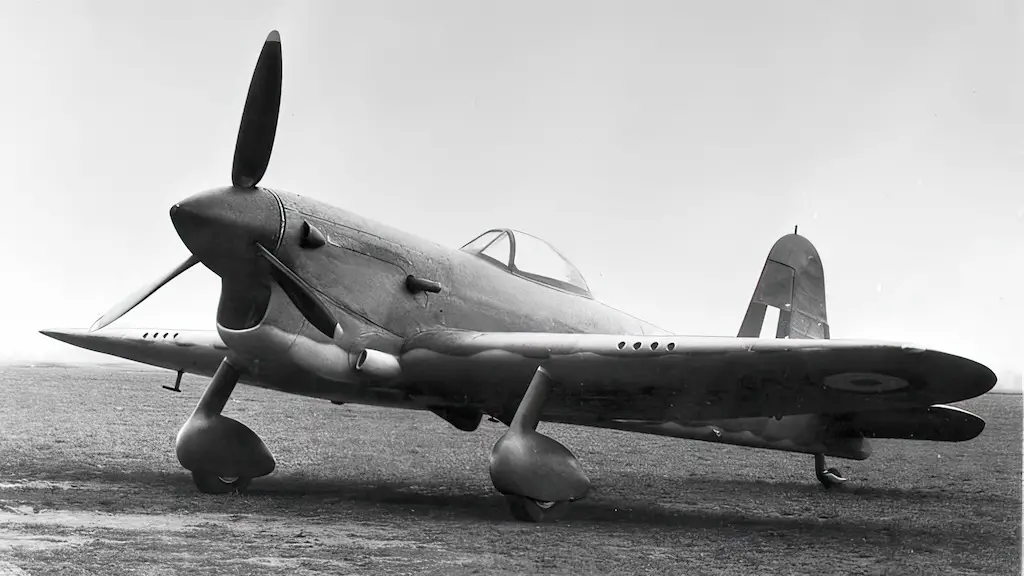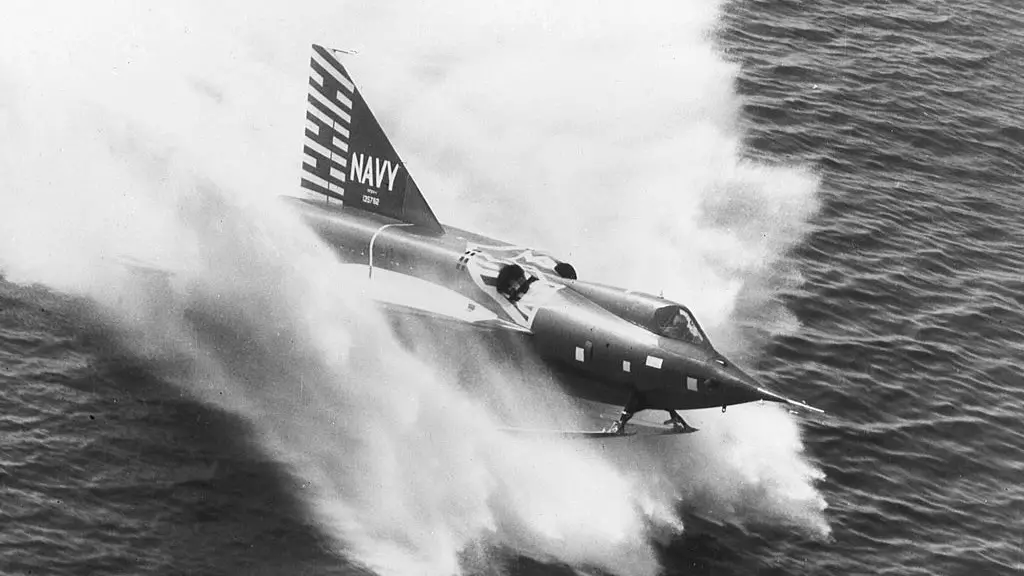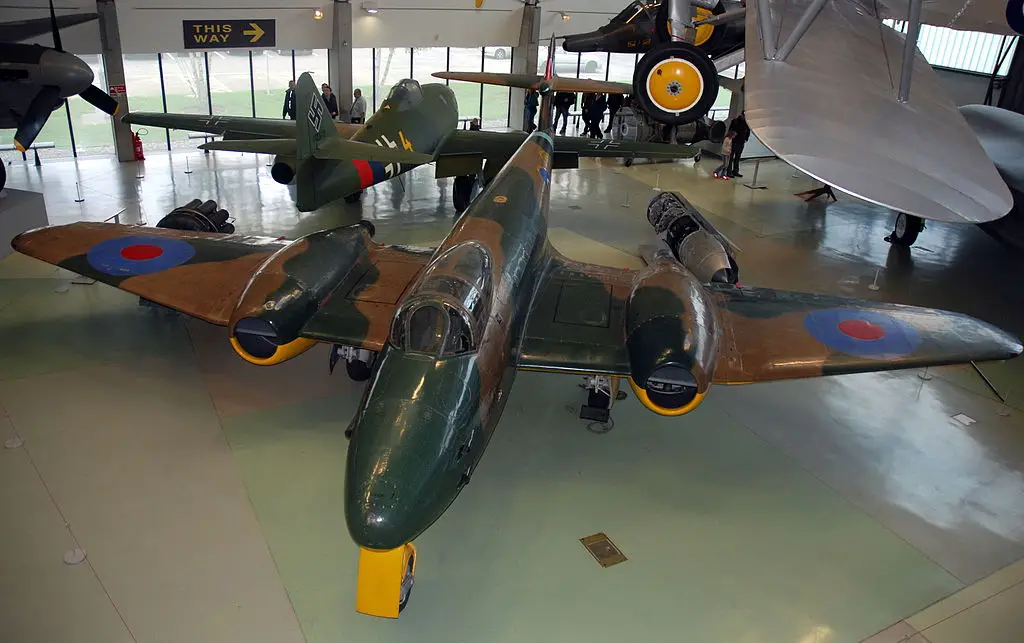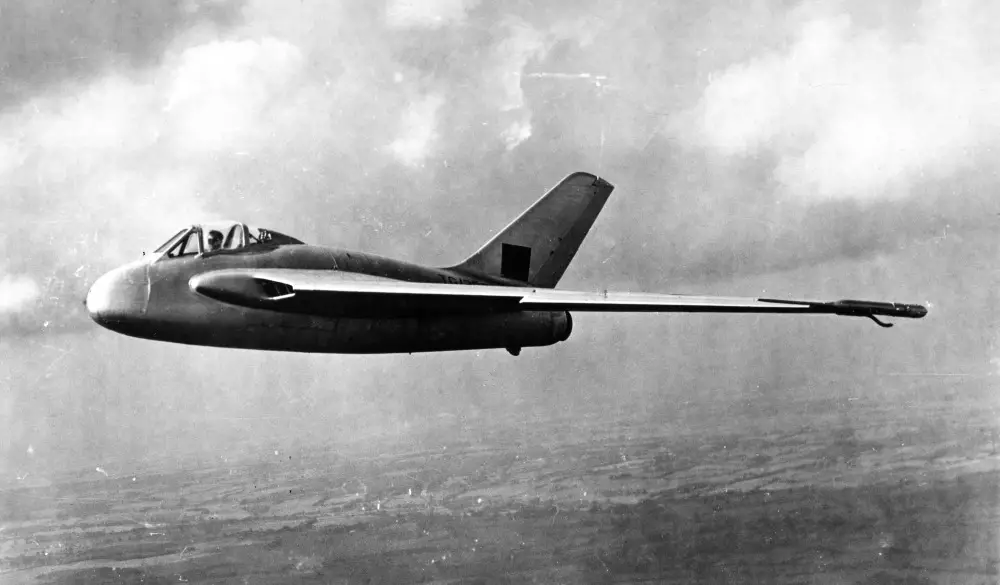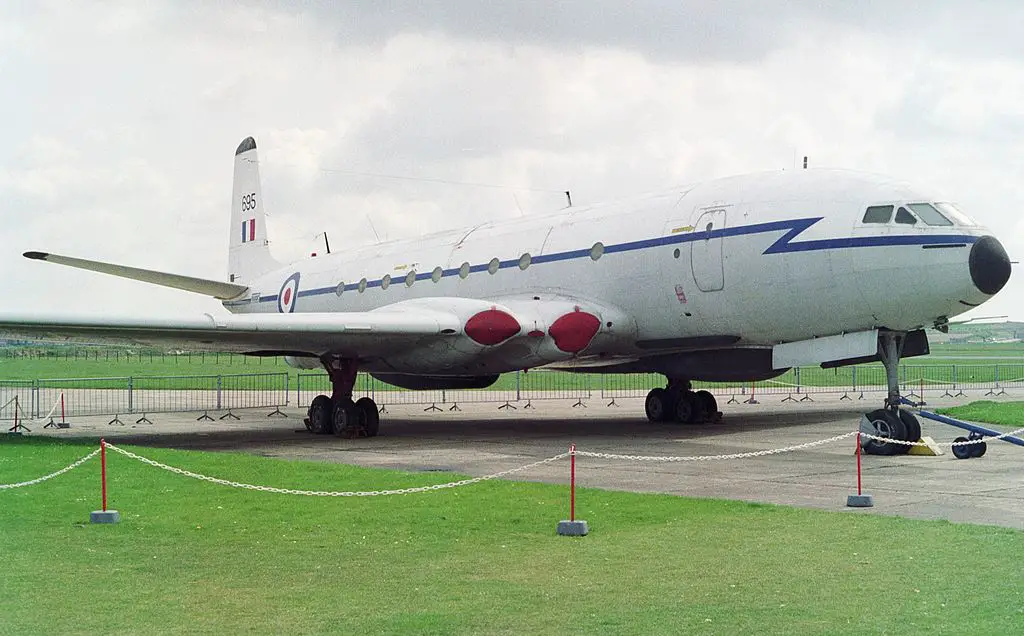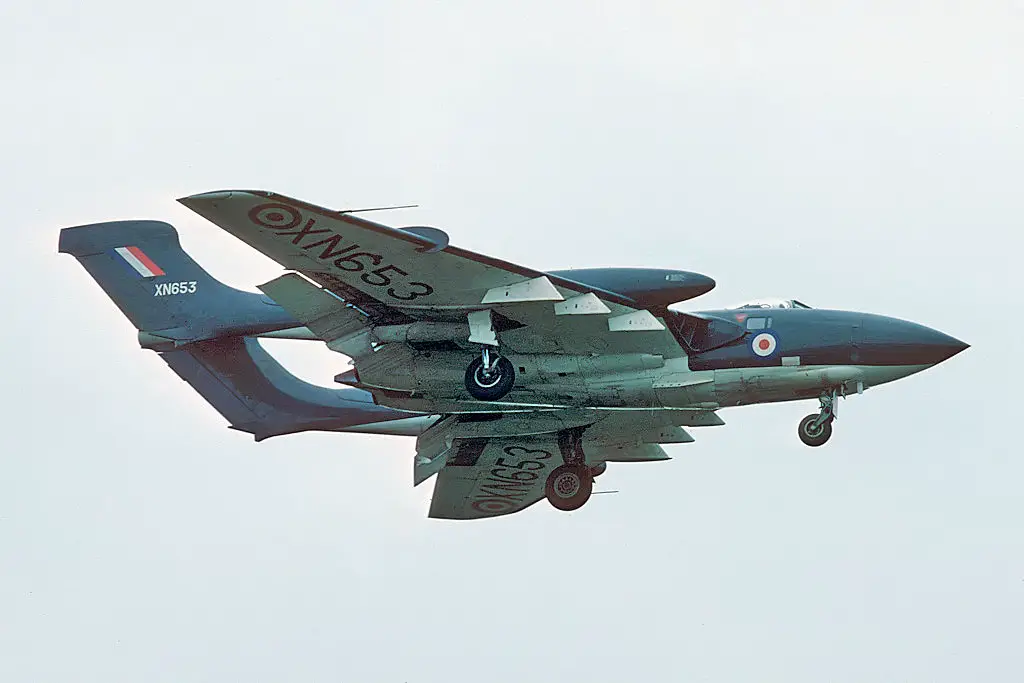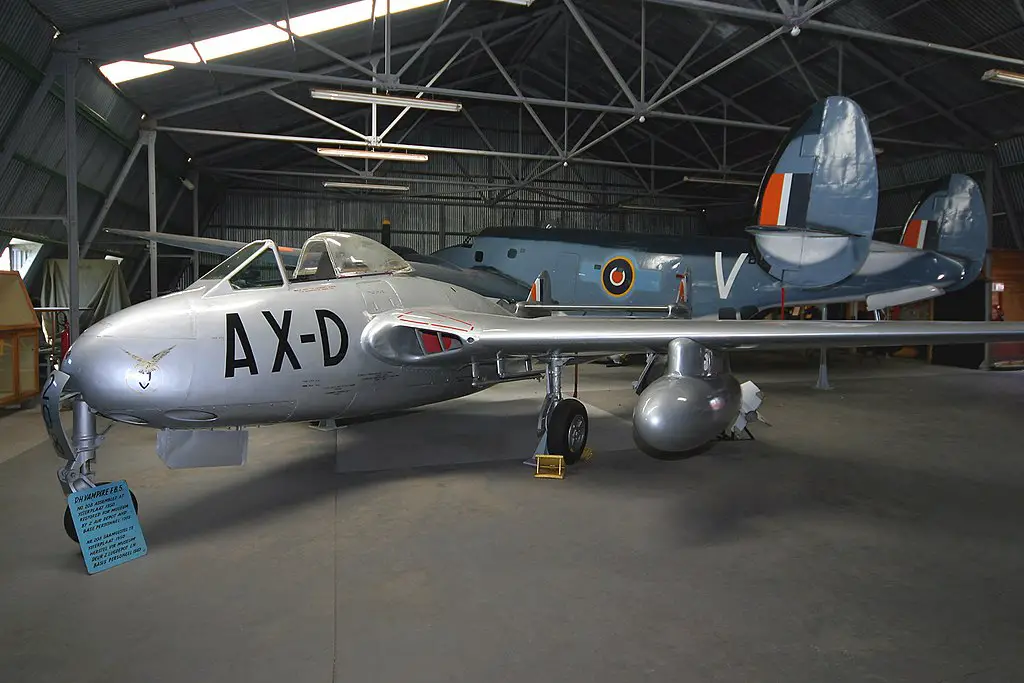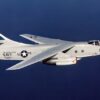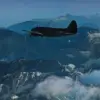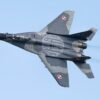The first British jet fighter, Gloster Meteor, made its first flight in March 1943, rushing in a new era in aviation. But there was still a long road to go to make jets really efficient, to bring them over the sound barrier, and to introduce them into civilian use. To achieve all these tasks tests pilots of late 1940s regularly put their lives at great risk, flying very dangerous missions in experimental aircraft. Such as almost 500 flights in de Havilland DH 108 “Swallow,” the fastest British jet of the time, which contributed to the development of world’s first commercial jet airliner, de Havilland DH.106 Comet.
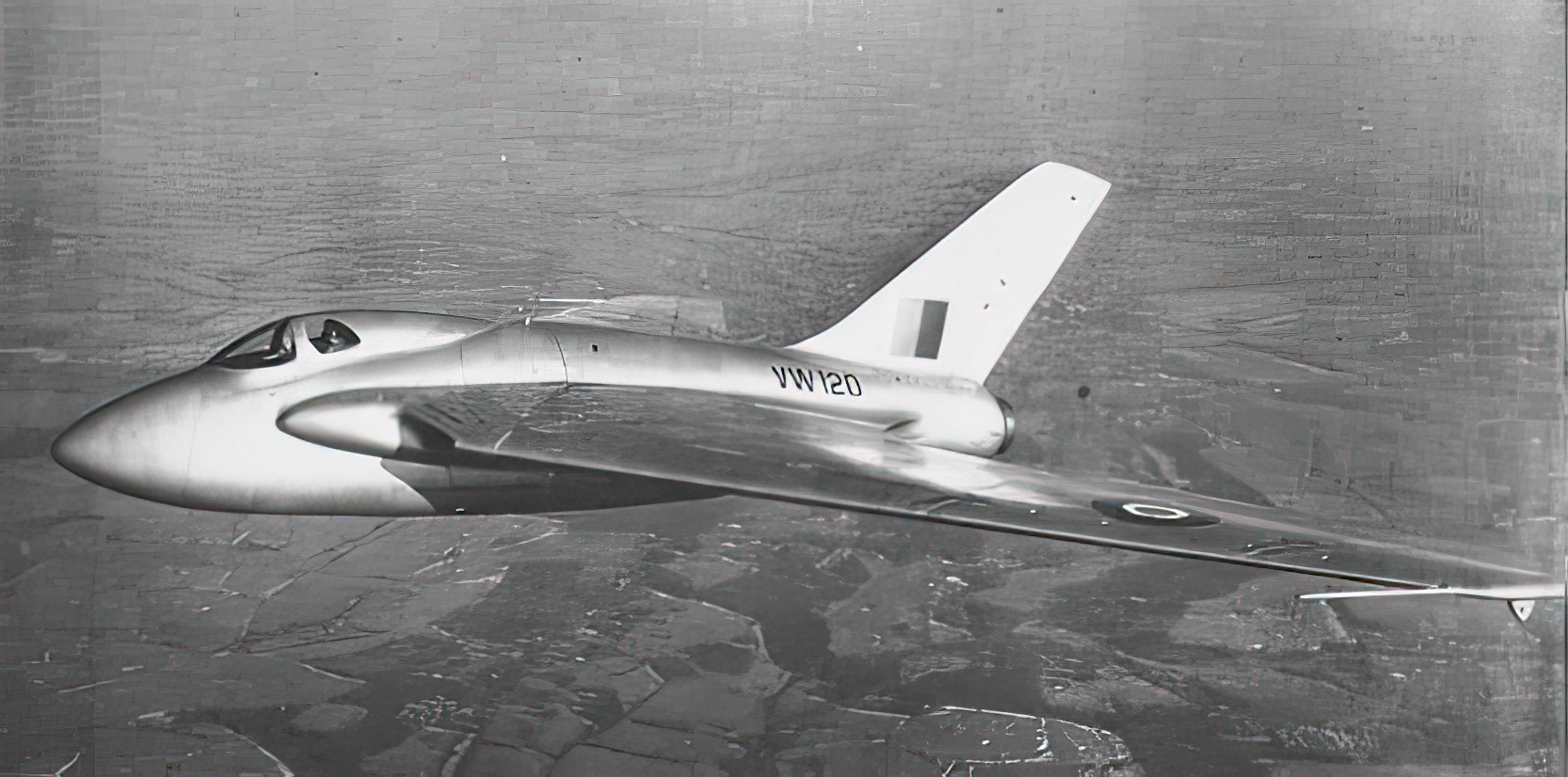
Vampire turns into a swallow
De Havilland built three DH 108 prototypes with the aim of evaluating swept wing design, which was to be implemented in the following years in one of the company’s most ambitious projects, the DH.106 Comet jet airliner. The DH 108 also provided research data for company’s another design, de Havilland DH.110 Sea Vixen naval fighter.
The testbed aircraft designed by John Carver Meadows Frost was based on de Havilland Vampire, the second jet fighter to enter service with the Royal Air Force after Gloster Meteor. The DH 108 retained the Vampire’s forward fuselage, while getting new wings with a considerably greater area and a sweep angle of 43 degrees.
The Vampire’s twin boom was replaced with a single vertical stabilizer, with the functions of horizontal control surfaces delegated to elevons on the wings. Although later abandoned, such a tailless configuration was among proposed design options for the Comet airliner. While de Havilland called the aircraft simply DH 108, the Ministry of Supply gave it the name “Swallow.”
Pushing the limits
The first prototype, TG283 was a low-speed research vehicle with a top speed of mere 280 mph. It first flew in May 1946, dispelling initial doubts in the viability of tailless configuration. The second one, intended for transonic flight, had wings swept at 45 degrees and featured a Goblin 3 engine. This aircraft, designated TG306, made its first flight in June 1946.
The final, third prototype, designated VW120, was powered by even more powerful Goblin 4 turbojet, providing 3,750 lb of thrust. It also had a longer, pointed nose and a more streamlined cockpit canopy. The VW120 made its first flight in July 1947, piloted by John Cunningham, who would be the first man to get the Comet into the air two years later.
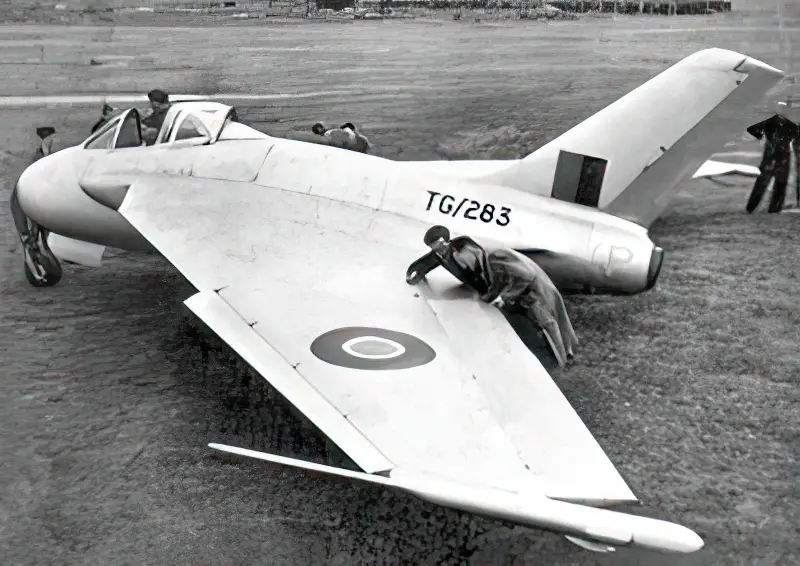
It was the fastest British aircraft at the time, outrunning both Vampire and Meteor. In April 1948, pilot John Derry set a world record over a 100-km (62 mi) closed circuit, averaging 974 km/h (605 mph). And in September of the same year, the VW120, again with John Derry at the controls, became the first aircraft in Britain to break the sound barrier. In 1949, it also entertained visitors of the Farnborough Air Show with a stunning aerobatic performance.
Airframe survival rate: zero
Statistically speaking, the Swallow was a terribly dangerous aircraft to fly—all three prototypes were lost in deadly accidents:
On December 27, 1946, test pilot Geoffrey de Havilland Jr, the company founder’s son, was killed flying the second prototype. While diving at Mach 0.9 from 10,000 ft, his TG306 exceeded its structural limits and disintegrated in the air over the Thames Estuary. The aircraft’s main spar cracked at the roots, instantly causing the wings to fold back.
The third prototype, VW120, was destroyed in a fatal accident that happened on February 15, 1950. The crash was attributed to faulty oxygen system incapacitating the pilot, Stuart Muller-Rowland.
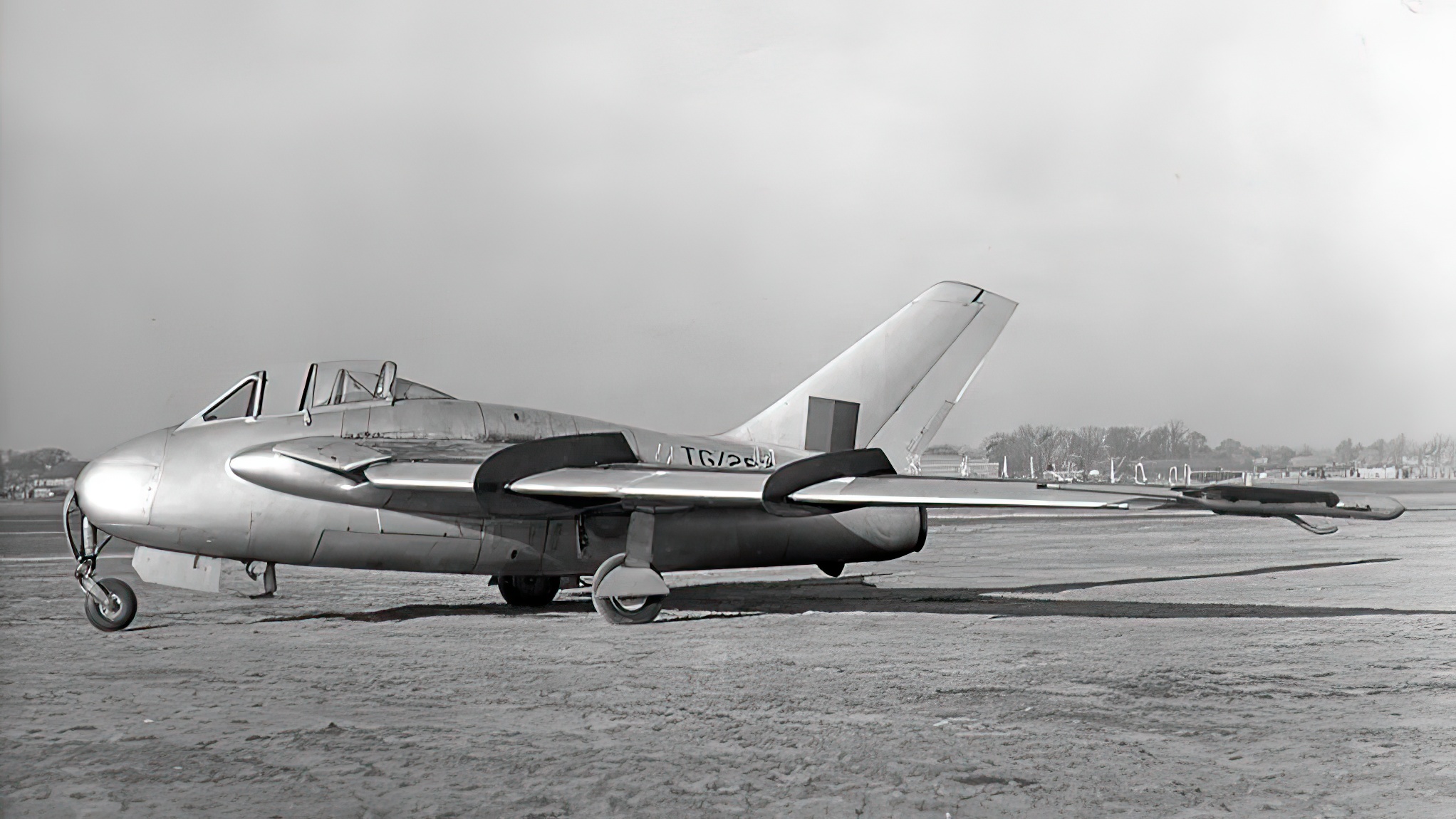
The first prototype, TG283, lived the longest, probably due to being the slowest of all. It was destroyed on May 1, 1950, during stall tests. The pilot, George Genders, managed to bail out, but his parachute failed to open in time.
To be fair, so high accident rates were not uncommon in the early jet age. And even the mass-produced DH.106 Comet civil airliner, built on the experience of the Swallow, suffered multiple hull-loss accidents during its career. However, it was exactly those decades of learning by trial and error that finally brought aviation to today’s high levels of safety.

